One of our favorite techniques in writing is the use of multiple close points of view. While it has an exalted history in fantasy—Tolkien jumped all over Middle-earth in The Lord of the Rings—what we’re especially excited about now is the way authors use the style to craft a much more personal story, by taking us into deep into the minds of many different characters. Multiple points-of-view allow a writer to show us the depth and breadth of their world, to explore class disparity and racial oppression, to tell different sides of a love story or a battle.
We’ve picked a few of our favorite recent examples—tell us yours in the comments!
A Song of Ice and Fire by George R. R. Martin
Buy the Book
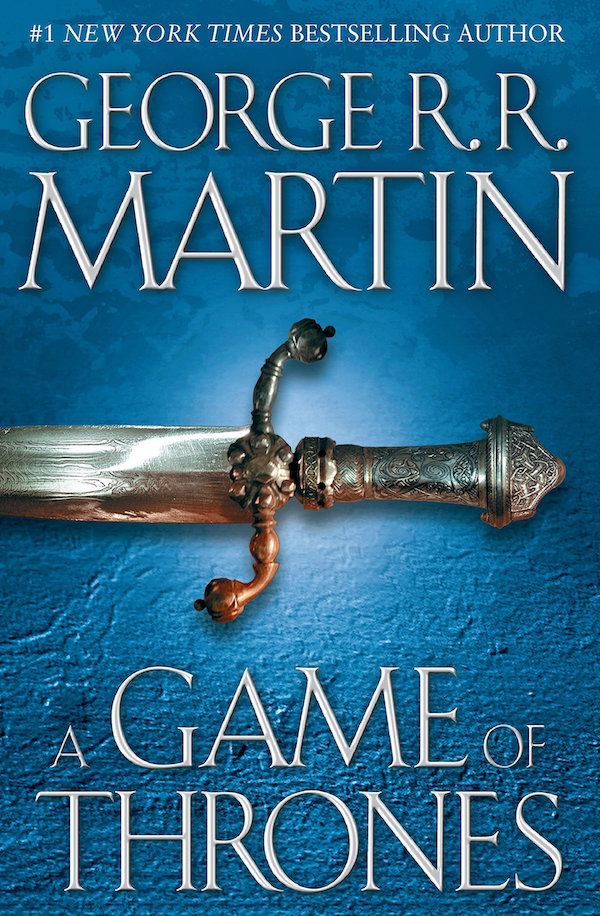

A Song of Ice and Fire
As Song of Ice and Fire may be the most popular current version of this story telling style, as the chapters shift points of view constantly, giving readers the opportunity to hop from mind to mind and get a fuller picture of the drama on Westeros. (Of course it can also be frustrating when, say, an entire book goes by without the point of view of your favorite character…) This technique has become one of the strong points of the television adaptation as well, as Game of Thrones’s writers frame our experience of the world through its characters: Sansa, navigating the court of Kings Landing; Tyrion, talking his way out of a foreign slave market; Jon Snow, journeying beyond the frozen Wall; Dany, conquering the lands of Essos…
The Ruin of Kings by Jenn Lyons
Buy the Book
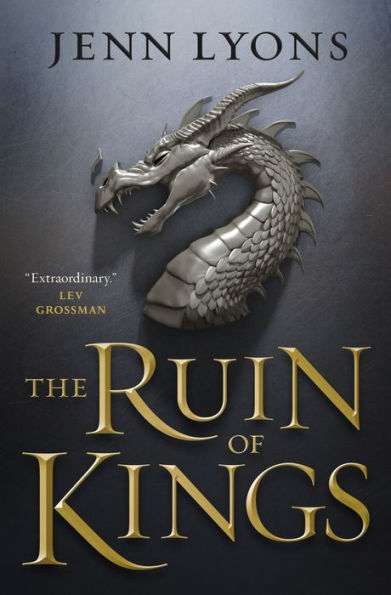

The Ruin of Kings
The Ruin of Kings focuses on Kihrin, a bastard orphan who is claimed against his will as the long-lost son of a treasonous prince and drawn into an epic conflict. The book is structured as a conversation between Kihrin and his jailor, a thousand-year-old demon named Talon. While Kihrin explains how he wound up in his less-than-pleasant circumstances at the novel’s start, Talon interrupts to tell her version of the bastard-turned-royal-heir’s tale—using the memories of those around him to create an unsettling multiple POV all her own. The novel flips between Kihrin and Talon, but also hops around in time—Kihrin starts his tale as an adult, but Talon insists on a more full accounting of his history. Royal servant Thurvishar D’Lorus, who has helpfully transcribed their conversation, adds a third layer of color commentary to the story via footnotes that range from informative to downright snarky.
Spinning Silver by Naomi Novik
Buy the Book
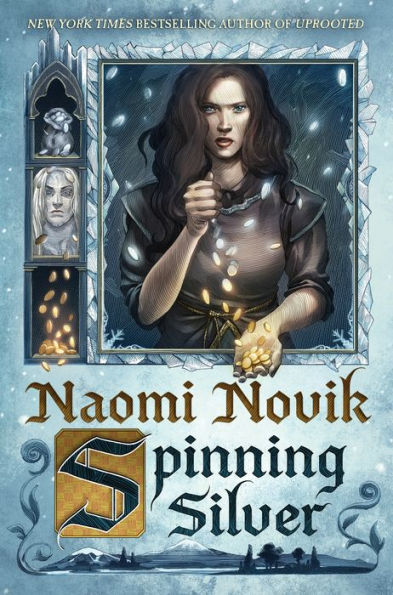

Spinning Silver
For roughly the first quarter of Novik’s charming standalone fantasy, the narrative unspools through Miryem—the pragmatic daughter of a soft-hearted moneylender who takes on her father’s work and recoups nearly all of the outstanding debts from his customers. Each of these interactions could have taken up only a few pages of Miryem’s tale, but instead Novik spins out each of their stories, giving truth to the adage that everyone is the protagonist of their own life, but also providing valuable dramatic irony for the reader as the characters take on ever more perilous transactions. Miryem’s ill-advised boast that she can “turn silver into gold” unwittingly spins a web that draws in a peasant girl, Wanda, and Irina, the unhappy daughter of a local lord who plots to wed his child to a dashing but sinister young tsar… If Miryem, Wanda, Irina, and the other narrators are each a silver coin, then tallying up their respective stories is a fine trade for the single, golden story they create.
The Broken Earth series by N. K. Jemisin
Buy the Book
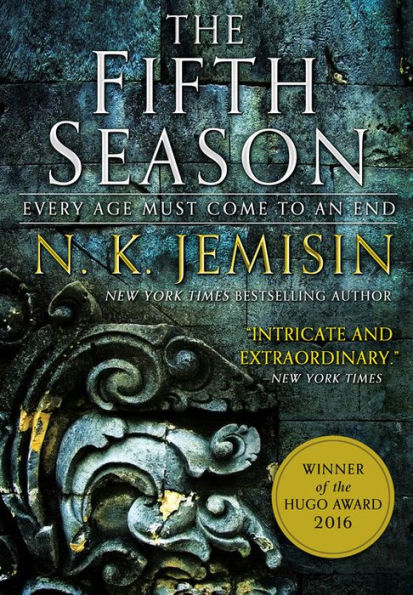

The Fifth Season
Beginning with The Fifth Season, N. K. Jemisin’s Hugo Award-winning Broken Earth series uses a multipart POV to masterful effect. The series follows the plight of a group called the orogenes, who can control energy to manipulate their planet’s surface and temperature. They are brutally oppressed—people who lack these abilities fear them, and the ruling class demands that any orogene children are either murdered or wrenched away from their families to be trained by Guardians… not that this training entirely protects them from murder. Over the course of her epic, Jemisin spans time by changing narrators. After an opening prologue narrated by an older orogene, she takes us through the points-of-view of three different female orogenes—Essun, Damaya, and Syenite—giving the reader each woman’s firsthand story, and a larger sense of the planet’s sweeping history.
The Children of Blood and Bone by Tomi Adeyemi
Buy the Book
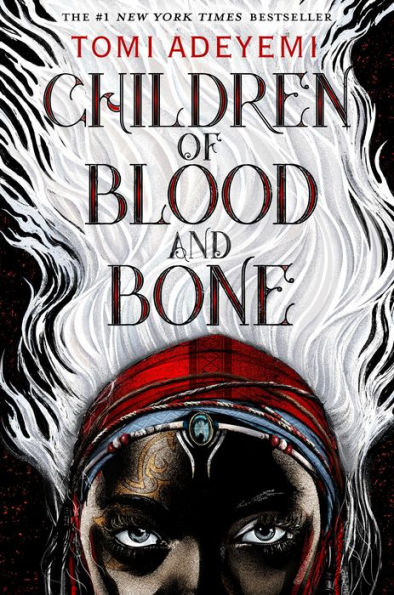

Children of Blood and Bone
Like the Broken Earth trilogy, The Children of Blood and Bone explores a society where magic is being stripped from the people, but this one uses multiple POVs to tell a much more compressed story, layering different characters’ experiences together. Saran, the brutal ruler of Orïsha, sends troops through the land raiding villages and lynching every “diviner” they can find. Eleven years later, Zelie is fueled by memories of her mother’s murder as she begins her quest to restore magic to her people. Her story is interwoven with that of Amari, a princess who seeks vengeance for another of her father’s murders, and Inan, the crown prince who ricochets between craving his father’s approval, and wanting to ally with the magic-users. As the three come closer and closer to Saran’s home, their stories twist around each other until they become one fantastical tale.
The First Law Trilogy by Joe Abercrombie
Buy the Book
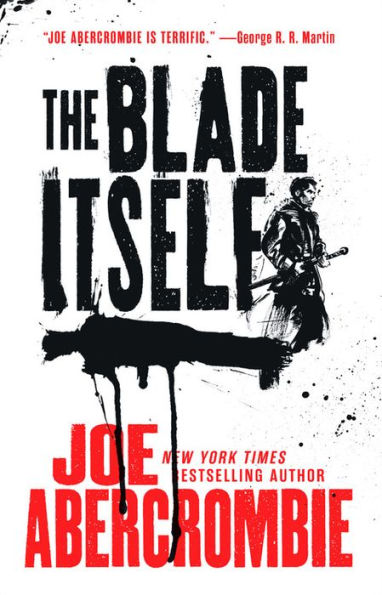

The Blade Itself
The First Law Trilogy—The Blade Itself, Before They Are Hanged, and Last Argument of Kings—tells its story through the six interwoven points of view of the main characters. As Logen Ninefingers, Jezal dan Luthar, Sand dan Glokta, Ferro Maljinn, the Dogman, and Collem West are all drawn into a plot hatched by the wizard Bayaz, they each tell their version of events as they work to save their world. Abercrombie shows off one of the best parts of the multi-part POV style: it’s a lot harder for a character to be a clear-cut villain, or a clear-cut hero, when you’re seeing them refracted through so many lenses. Even the professional torturer Glokta becomes a lot more ambiguous when you have to spend pages in his head, as he questions his own actions and wrestles with guilt.
The Tiger’s Daughter by by K Arsenault Rivera
Buy the Book
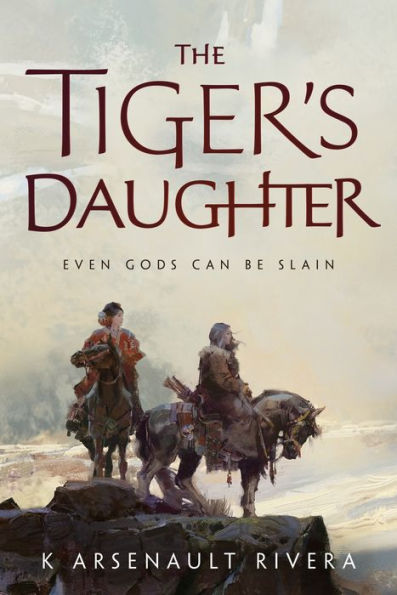

The Tiger's Daughter
The Tiger’s Daughter unfolds across a series of letters between the Quorin warrior Barsalayaa Shefali and her pampered (but still just as warrior-y) ladylove, the Empress O Shizuka. Experiencing the world through the very, very different eyes of Shefali and O Shizuka adds richness and depth to the tale, and the intimate epistolary style also adds warmth to the love story between the two women. Readers see how they talk both to and about each other, how they develop and express their feelings for one another; plus there’s the fun of literally reading between the lines as they recount their histories both as individuals with very different roles in their society, and as a couple whose love transcends society completely.










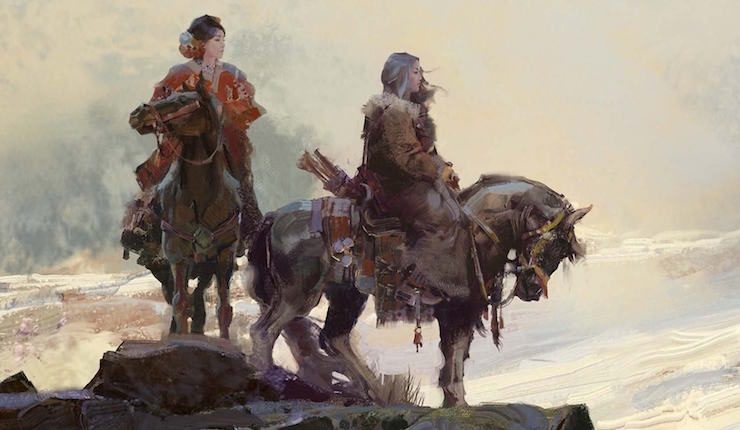
One of the best things about multiple POVs is that the readers learns more about the setting and events of the plot and the action taking place in the story. In addition, multiple POVs assist with world-building.
Wheel of Time?
Robin Hobb’s Liveship Traders?
Brian Stavely’s Chronicle Of The Unhewn Throne trilogy.
Thanks for reading my musings.
AndrewHB
Brandon Sanderson’s Stormlight Archive.
Not to be confused with books that switch POV’s mid-paragraph or without a clear break. Not referring to an omniscient POV, but a limited 3rd person POV that does not stick to one character at any given time. Like nails on a chalkboard for me.
@austin Well said. There are too many books which give everybodies POV at the same time. Authors avoid this please! How can readers identify with every actor and extra?
I see what you did there with Jemisin ;)
Elizabeth Bear’s Eternal Sky books?
Timothy Zanhs conquere’s saga. Tracy Hickman’s Mystic Warrior series, Steven Eriksons Malazan book of the Fallen series.
Obviously a number of series could have been mentioned here, so I just want to cosign on adding The Wheel of Time, Malazan and Stormlight Archive series to the list.
@6: Yeah. That’s one of the (many) things I like about ASOIAF and other books in that style — there are lots of POVs, but only one per chapter, so I don’t get confused by POV changes that may or may not be marked with section breaks of some sort in a print version but are unmarked in an audiobook.
I’m reading the Broken Earth trilogy right now. Essun, Damaya, and Syenite do have different points of view, but…
You might at least have headlined this “6 Fantasies Told from Multiple Points of View… and 1 That Only Seems That Way.”
Along with @2 and @5, Malazan Book Of The Fallen.
I generally don’t care for excessive use of multiple POVs are I find it distracting and tedious and many authors just can’t pull it off well. I often start skipping certain characters I just don’t care about to get back to the “important” characters who’s story arcs I actually want to follow.
Of the books listed in the article the only one I’m familiar with is The Tiger’s Daughter and since the author limits herself to the two main characters I’d agree that the alternating POV adds to that story, rather than detracting from it.
I really enjoy Claudie Arseneault’s Isandor series (City of Strife, City of Betrayal), and she handles a huge number of POVs really well.
Steven Brust’s Tiassa is a very fun example of this, with not just multiple viewpoints, but writing styles.
Piers Anthony’s On a Pale Horse has a segment where the protagonist experiences the same event multiple times from different perspectives which is a lot of fun as well.
Lord of the Rings is too obvious to mention, though I’ll mention it.
Echoing The Malazan suggestions.. There are so many “main characters” in the series and I think Erikson does an amazing job of giving us those glimpses for each of them. My favorite though have to be the “side” characters when they get their moment. Reading the main storyline is great, but the most moving for me was the story of Beak. When the spotlight finally hit him and I walked with him through his moment it took my breath away. Such a surprise welling of emotion for a character that would not be named one of the “important” ones.
Tolkien and Sanderson are the very best!
This is very common in fantasy (not that I’m condemning the premise of the article). Just off the top of my head, The Demon Cycle, The Runelords, The Moontide Quartet, The Licanius Trilogy, Lightbringer, The Chaos Queen Quintet, Ember in the Ashes, The Powder Mage Trilogy, Mistborn… Really, single-POV fantasy is probably more unusual.
@23 Mistborn? Wasn’t the entire first book 90% Vin’s POV? Maybe a bit Kelsier. But hardly the same category as a lot of the other suggestions.
@24: Mistborn, as a series, had multiple POVs. There was Kelsier, Vin, Sazed, Elend, and Spook as the main ones. Marsh had several chapters as well.
Elantris, Brandon Sanderson’s first published novel, took this multiple POV style and turned it into an art form: for the first two parts of the book which were 27 chapters each (3 to the 3rd power), he alternated the POV’s of the 3 main characters.
I’m trying to think of a multivolume fantasy that’s not told this way.
Another which is told from two alternating first person viewpoint’s is Andre Norton’s Crystal Gryphon (and its sequels).
One of my favourite books when I was growing up — the two different first person viewpoints (sometimes of the same scene) enable telling a unique form of storytelling which I can’t think of having been done by anyone else.
Fred Saberhagen used alternating points of view in his Holmes-Dracula File.
@6, 7, & 12–
That’s called head hopping, and it’s generally considered poor writing.
Movies don’t often do this, but Jet Li’s Hero does this well.
Doing multiple viewpoints takes skill. It took me 5-6 years and at least half a dozen starts to get past the first section of Game of Thrones, the book, because I couldn’t handle the viewpoint/setting change from the North to King’s Landing. It’s a danger of building too much reader identification with a single character. And yet, I REALLY hate books that jump a lot from character to character, a la James Patterson. Brian Staveley is someone who has done it right, IMO, but what made that work when others didn’t is something I can’t explain. In general, I prefer single viewpoint novels that let me experience the plot along with the main character–they are becoming rare.
Tight 3rd person POV with multiple POVs is literally the default of Epic and Secondary World Fantasy for 35+ years. Its so ingrained in the genre that I can barely read anything else, because I was raised on it almost exclusively. The first three Shannara books were less tight than the rest, but by ’88, nearly everything was multiple tight 3rd person POV with a line break for POV changes mid-chapter. This list could be hundreds of series long.
As far as using it to great effect? I think A Song of Ice and Fire is amazing at this. So it the Wheel of Time. Both use the format effectively to mask what is going on, while giving us deep personal glimpses of major and supporting characters. The Expanse is a delight in this way as well.
@29:
Its more that its stylistically out of fashion. It used to be completely common. Authors would dip in and out of each characters’ head as needed, without a scene break. The entirety of Dune is written this way. No one considers Dune to be poorly written.
@33 /Anthony Pero – umm, this is the internet. You can get a dissenting opinion on anything. Case in point: Dune’s a great book, but for me the writing isn’t great. Paul is literally the chosen one, but he’s just too perfect. He even starts to get trained as a mentat! Then there’s the way everyone follows The Prince as if Machiavelli wrote the Bible. Once you realise that, you know exactly what everyone is going to try to do. Then there’s a scene at the end of the book that had echoes of Henry V. Sometimes you can invoke that and it provides synergy. When I read Dune, it distracted me.
Passages in Dune are well-written, for instance the Sand Worm riding scenes are excellent, with the imagery staying with you. If the book had been consistently well-written, it would have been able to deal with the flaws I noted above. Yet I noticed the flaws, ergo some of it is poorly written (from my point of view).
And that’s before we even get to the clumsy use of fat and homosexuality as signifiers of moral failing.
@34:
Well, fair enough. Ironically, your statement there may be something where a dissenting opinion may actually be hard to come by. So I’ll rephrase:
Dune is widely considered a well-written book, and a masterpiece of the 20th century. Your mileage may vary.
The fat and sexual deviancy (the preference for raping young boys) are signifiers of excess and power abuse. These are things the Baron leans into intentionally. And a preference for raping young boys is not homosexuality. Its a power trip. He’s not attracted to them as other men, what gets him off is their vulnerability, and that it was unacceptable. He’s a predator. We’re having a discussion about this on another thread right now, actually. You should chime in: https://www.tor.com/2019/02/05/how-to-handle-the-baron-harkonnen-in-a-modern-dune-adaptation/
For all those Malazan suggestions, I second those with the caveat that those books can be a bit confusing at times.
Personally, I do yearn for for more fantasy series that take a break from this. I just started The Witcher novels by Sapkowski and it’s nice to stay tight to Geralt’s viewpoint in this first book. I also really enjoyed The Black Conpany novels by Glenn Cook, each of which is told through the eyes of whichever character is the current Historian for the mercenary group.
I’ve enjoyed the habit of Modesitt’s Recluse series of often discussing the same events from the perspective of both “sides” in different books – either comparative descriptions of the same events, or references of historical events. You don’t get the bouncing back and forth in real time, but it can be quite interesting to see the contrasting points of view.
I’m trying to think of series where this ISN’T the case. Although one of my favorite comfort reads (Summers at Castle Auburn) IS a single POV, but it’s a much more intimate story.
I DO find slipping back and forth between POVs to be a bit jarring, although it’s not ‘wrong’ per se. And an ominiscent third person POV can work in certain works. I think the Silmarrilion might actually qualify as that, but given its style and the way it’s treated as a spanning history/mythology, and not so much a character study (or even really a worldbuilding study) it fits. Even Lord of the Rings, I think, isn’t a tight third person POV…there are definitely times the ‘narrator’ kind of jumps in.
It’s not SFF, but As I Lay Dying is one of my favorite examples of this in ‘classic’ literature.
@38
Robin Hobb’s Farseer series? (first person POV, told in past tense from the memories of one character for the first trilogy. It gets omnicient third person POV, but only following one character, in the second trilogy. And again first person POV following only one character in the third trilogy. I didn’t read Liveship traders, set between the first and second trilogies).
Jacqueline Carey’s Kushiel series? (first person POV, only Phedre’s for the first trilogy)
I think the antithesis can be found in any fantasy / science fiction pastiche of the Sherlock Holmes stories, where the “sidekick” character is writing up the adventure afterwards. I find these interesting in the way you know one character will survive, but maintains the dramatic tension because it’s not the protagonist.